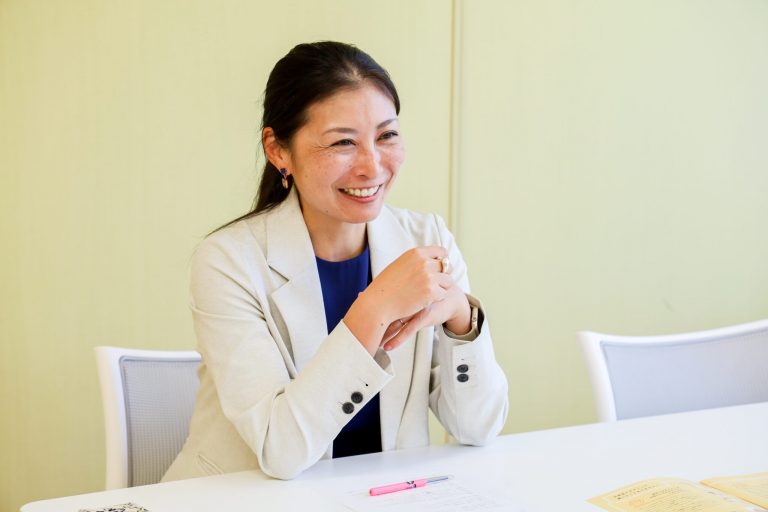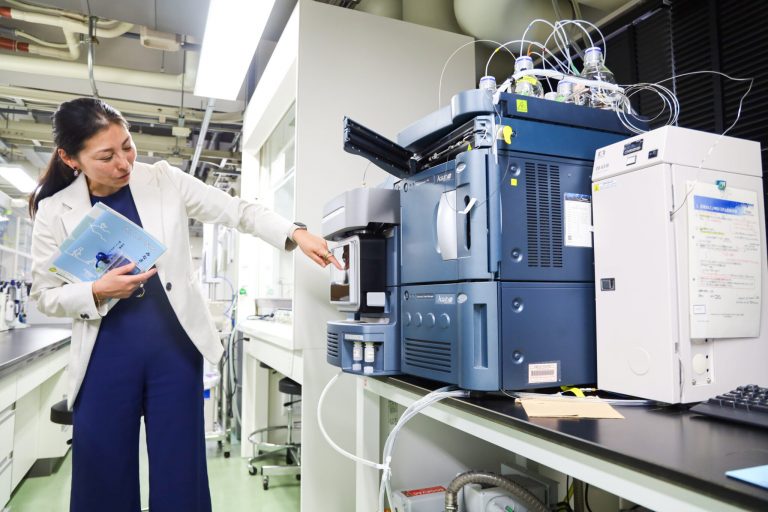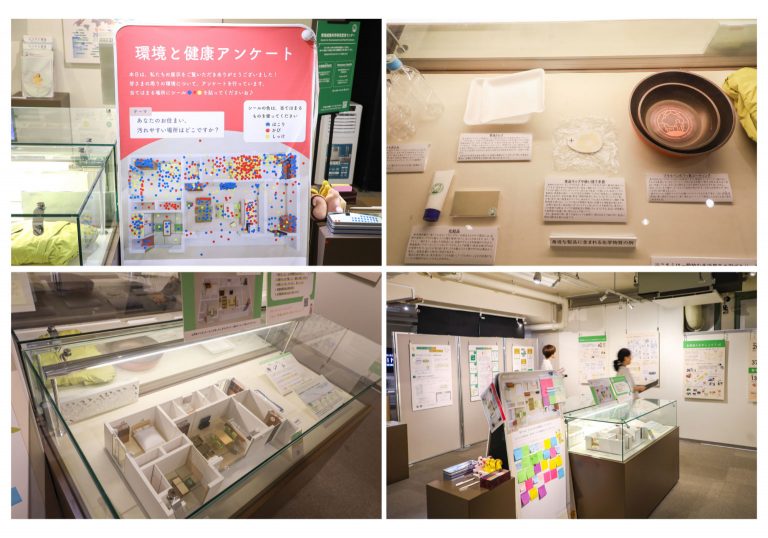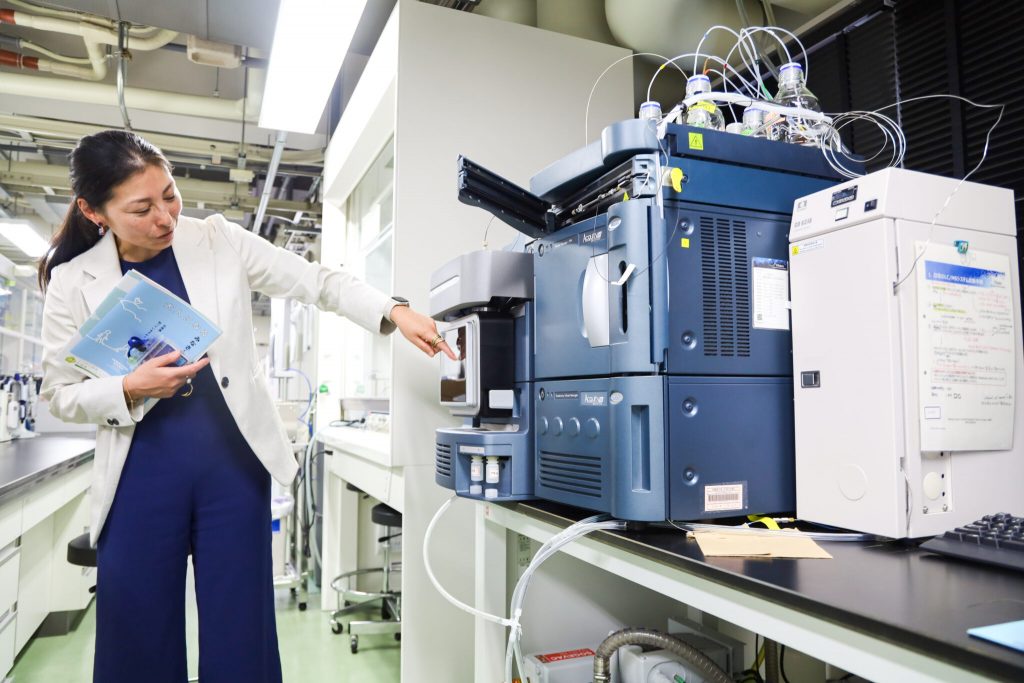Specially Appointed Associate Professor Yu Ait Bamai, at the Center for Environmental and Health Sciences (CEHS), conducts research focused on the impact of environmental chemicals and children’s health. Based on data from a birth cohort study, Dr. Ait Bamai and her research team proposed that childhood eczema may be influenced by the mother’s environment during pregnancy.

“Indoor environments have been known as one of the risk factors for health issues among children such as asthma and allergies. However, there is limited research exploring whether the indoor environment during pregnancy affects their children’s risk of childhood skin problems—specifically eczema. To explore this, we investigated this research question by analyzing questionnaire data from the Japan Environment and Children’s Study (JECS). This is the first study in this research field in Japan.” said Dr. Ait Bamai.
JECS is a nation-wide birth cohort study funded by the Ministry of the Environment in Japan. Approximately, 100,000 pregnant women were recruited between 2011 and 2014. The large sample size is a unique strength of this study.
The parents provided information about their children’s eczema-related symptoms, basic characteristics of participants (age, child sex, parental history of allergies, etc.); and their indoor environments (types of house, building age, housing materials, cleaning habits, indoor mold growth, etc.). In total, 71,883 mother-child pairs (1.5-year-old) and 58,639 pairs (3-year-old) were responded, respectively. Dr. Ait Bamai and her team analyzed the collected data using statistical methods. The result shows correlations between the indoor environmental factors during pregnancy and risk of eczema regardless of the parents’ history of allergies.
Among the various factors that may contribute, Dr. Ait Bamai and her team identified a significant association between multilayered wood flooring and the risk of developing childhood eczema. Residential buildings in Japan often have floorings made of compressed layers of wood. Dr. Ait Bamai pointed out that this type of flooring contains synthetic chemicals, such as phthalates and organophosphate flame retardants, that are used to bond layers of wood and polishing agents, respectively.

Dr. Ait Bamai referenced a previous study conducted by another cohort study, the Hokkaido Study, which specifically analyzed house dust and urinary metabolite of phthalates and organophosphate flame retardants. She explained that these substances can be taken into the body through exposure to house dust, having higher correlations between their concentrations of house dust and urinary metabolites. Additionally, it has been reported that higher concentrations of these synthetic chemicals in house dust were linked to the risk of eczema in the Hokkaido Study. Similar to the JECS questionnaire-based cohort study, the result of this study also suggests a correlation between the house environment during pregnancy and the development of childhood eczema.
Hokkaido Study is a Hokkaido-wide, long-term birth cohort study established in 2002, and led by CEHS, Dr. Ait Bamai’s affiliation. The Study is collaborating closely with local health institutions and Hokkaido residents. JECS started in 2011, 10 years after the Hokkaido Study started, yet they share a common goal: understanding how environmental factors including lifestyle affect health. This is achieved by sharing resources to support each other’s research.

Dr. Ait Bamai’s and CEHS are devoted to giving back to the society and the stakeholders by providing the findings of the research through many initiatives. The most recent example of which is an exhibition organized by Hokkaido University Museum. Taking part as one constituent of a larger learning exhibition named 「北大の探求心2024」(Hokkaido University’s Inquiring Spirit 2024) which concluded in September, CEHS set up an informative corner where the museum visitors could learn about the environmental effects on health. There were interactive learning materials for children-visitors.
Also introduced in the exhibition was from the Hokkaido Study. Not only conducting research, Hokkaido Study is also dedicated to promoting health education among the local community.
“Once or twice a year, researchers from the Hokkaido Study host public lectures and seminars on various topics. Maintaining long-term engagement with the Hokkaido Study is important. So, we not only send out questionnaire forms, but also share research updates and findings through materials like newsletters,” explained Dr. Ait Bamai.

While acknowledging the health risks associated with chemicals, Dr. Ait Bamai emphasizes that it is impossible to achieve a completely “Zero Chemical” lifestyle or maintain a perfectly clean home.
“Instead, focusing on more practical and efficient cleaning methods is a better approach. For instance, rather than prioritizing the entire floor, I would recommend dedicating time to cleaning carpets, as they tend to accumulate dust more easily. It is also important to know what chemicals are used in consumer products so that you can make your own product choices. It is good to be cautious, but I think that it is not good to be overly worried about these things, it only makes your life difficult,” said Dr. Ait Bamai.
Researcher’s Contact Details
Yu Ait Bamai
Specially Appointed Associate Professor
Center for Environmental and Health Sciences (CEHS)
Hokkaido University
Email: u-aitbamai [at] med.hokudai.ac.jp


